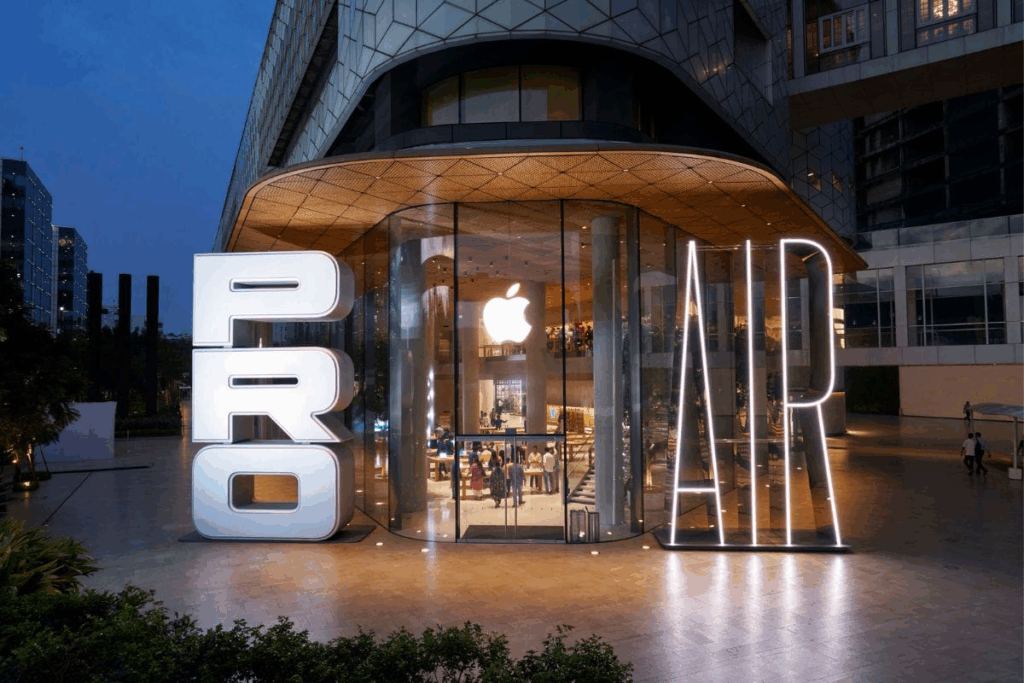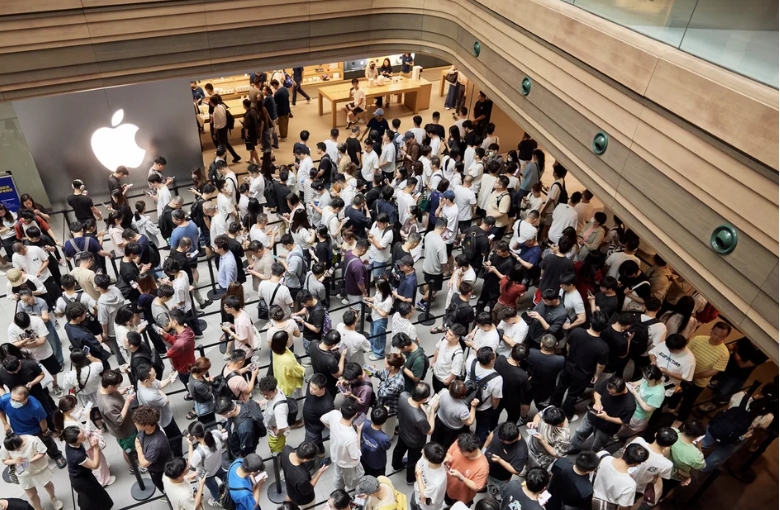📱 Apple (AAPL) is once again at the center of global market attention (we wrote about the new product here). The first sales of the new iPhone 17 exceeded analysts’ expectations, becoming an unexpected positive surprise for both investors and the company itself. However, experts note that this success is driven more by predictable market dynamics than by groundbreaking innovations.
Key facts and figures
- iPhone 17 sales in the first days were 10-15% higher than those of the iPhone 16 a year earlier.
- Around 315 million users worldwide have not upgraded their smartphones in the last four years. This created a strong “deferred demand,” which became the driver of sales growth.
- Analysts’ forecasts for shipments in 2026 have been revised upward: now 240-250 million devices are expected, whereas earlier the forecast was about 230 million.

The first buyers of the iPhone 17 Pro in Sydney
Source: Apple
Apple CEO Tim Cook posted a photo on social network X of the Apple Store in Mumbai (India). Large “Pro” and “Air” letters in bold and thin fonts decorated the entrance, subtly highlighting the difference between the ultimate iPhone 17 Pro and the premium iPhone Air.

Analysts’ opinions
Wedbush raised their price target for Apple shares to $310, noting a strong start to the sales cycle.
- Deepwater Asset Management emphasized that the iPhone 17 cycle has started very confidently and may set a positive tone for the coming quarters.
- Jefferies, on the other hand, recommend holding shares, warning of risks. In their view, sales of the more expensive models — iPhone Air and iPhone 17 Pro — remain weaker than expected, which could affect overall revenue.

The first buyers of the iPhone 17 Pro in Sydney
Source: Apple
Technical picture
On the stock market, Apple has almost reached a key entry point — the level of $260.10 per share. This level formed after 38 weeks of consolidation and may be seen as a potential buying opportunity for investors focused on long-term growth.
What this means for Apple and investors
Despite the lack of radical innovations, the iPhone 17 is launching a classic upgrade cycle: users are massively updating outdated devices. For the company, this means a stable revenue stream in the coming quarters. For investors, it confirms that Apple’s business model continues to work, and its shares remain a reliable growth asset.

The first buyers of the iPhone 17 Pro in Sydney
Source: Apple
💡 Summary
💡 Conclusion
The iPhone 17 is unlikely to go down in history as a revolutionary smartphone. But from a business and financial perspective, its launch is a powerful catalyst. Demand is strong, sales forecasts have been revised upward, and the company’s stock is preparing for a new surge. This is not a sensation but a time-tested scenario that once again benefits both the company and its shareholders.
All content provided on this website (https://wildinwest.com/) -including attachments, links, or referenced materials — is for informative and entertainment purposes only and should not be considered as financial advice. Third-party materials remain the property of their respective owners.


